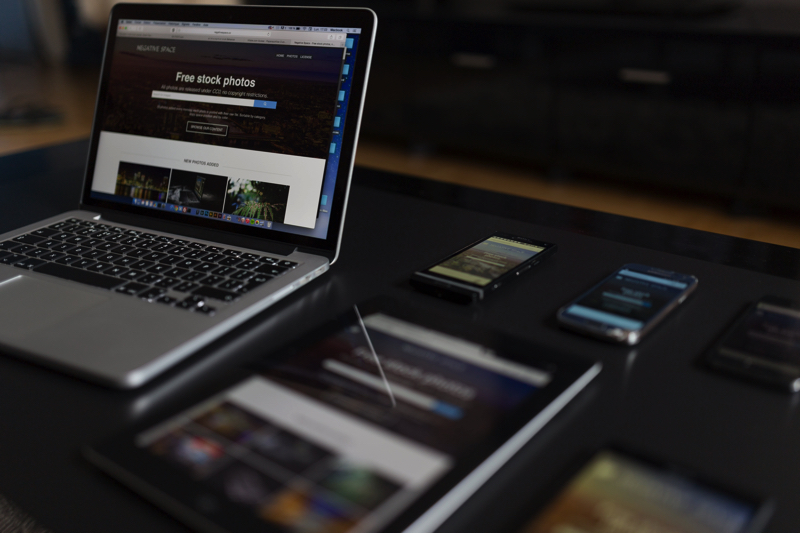
It’s five years since I originally wrote this article and a lot has changed, Its now 2020 and the world has been thrown into a challenge never before experienced. With the Covid-19 virus forcing us to stay home, we have had to rapidly adapt to remote working. This has led us to trying and testing new programmes and tools that allow us to communicate, collaborate and hopefully stay sane in the process.
Like my good friend Mike Vardy, I’m a “productivityist”.
Mike is a Productivity speaker, author and pretty much an authority on every tool, app and system ever created, and he is a nice guy to boot.
Mike coined the unusual but rather descriptive word “Productivityist” and describes it as follows:
“A productivityist is a productivity enthusiast. They are someone who studies productivity, be it the tools or habits. They dive deeper into the realm than most people. Just like a comedian looks at the world differently, so does the productivityist. Productivityists, like other enthusiasts, like to go further in their craft and push boundaries. They like to explore new processes, new ideas, new ways to get things done. And for a while they wind up doing productive more often than being productive…but they start to shift the other way over time.”
When I first got interested in Productivity back in 2007 I was a productivityist in the making. I tried out lots of apps, software and systems trying to find what worked for me. Here are some of the tools I have tried in the past and the ones that I am currently using to help me stay organised, focused and help me to keep getting things done despite all of the distractions working from home brings.
Helping me Stay Organised
I started out using Outlook tasks to organise my tasks. I then moved to Remember the Milk, I used Wunderlist , I also used Todoist for a while its addin installed seamlessly into Outlook, it was simple, intuitive and effective. I was using Evernote in the background as my virtual filing cabinet and my note taking app.
But then Evernote I decide to try out all the features of Evernote, templates, internal linking and stacking, turning it into my own project management tool, it became my world for a little while so much so I commit 100%. I was ever loyal and put up with the bits that didn’t quite work for me. I tried GTD with Evernote but that didn’t last, I used it for all my projects and personal stuff, I even co-wrote an eBook using a shared notebook. I became Ireland’s first and to date only Evernote Certified Consultant and have even spoken for them. 7 years later it still remains my core tool but there are many tools that I find more efficient for task and project management, depending on the project and who my co-collaborators, I have used and continue to use quite a few.
G Suite has never been my favourite tool, especially for managing tasks and email, its cluttered and inefficient, apart from that its document sharing and calendar work very well for small teams, but word documents and spreadsheets are not the best way to organise tasks and projects therefore using a tool that is designed for purpose is a much better idea for efficiency and productivity.
Teamwork, Asana, Trello are all brilliant tools that take collaboration to the next level, they eliminate the need for email conversations and pointless meetings allowing all project conversations to happen internal in the software. Teams are massively missing out if they don’t use a project management tool and to avoid the pitfall of doing productive instead of being productive my advice is to take a quick look, read a few reviews and choose one according to what feels or looks best. All of these tools work well, the impact will be felt over time with the commitment to using it.
Helping me Focus
My first book Chaos to Control was 50,000 words long and it tool me 2 years to write. My second book Productivity for Dummies was 90,000 words and it tool me six months to write, how? I used some of the techniques I wrote about in that book, one of which is the Pomodoro technique. The technique involves working in bursts of work. Work for 25, take a 5 minute break and work for a further 25 minutes. The key part of this technique is the break, allowing the mind to rest refresh. I was never interested in the Pomodoro technique before, it was too simplistic and too directive, (I don’t like to be told what I can do when!) But when I finally tried it out when writing about it, it was incredible how it improved my focus and allowed me to write for longer periods of time over the day. It has definitely helped me stay more focused but it also reduces any stress build up and encourages you to drink more water, helping you to stay more hydrated which not only improves focus but energy too.
Bizarre how we fight systems, thinking this or that won’t work for me, I thought 25 minutes was too short to produce anything of value but if it works for thousands of people, chances are it will work for you and me. What I find is that the 25 minute bursts really push you to focus and achieve something in that time frame, then the 5 minute break allows you to go to the loo, make a cup of tea or grab a glass of water, have a stretch, then back to work.
It can also help to work out how many 25 minute sessions it takes to write a chapter so I know if I’m on track with my writing or not.
Focus at Will is a tool I often speak about as it has been invaluable for me when writing my books or my Audbile course Get Organised. Stick on the headphones and listen to personalised digitally remastered music to help you focus and get more done. Definitely a tool that would help a lot of parents in these challenging times.
Process street is a simple process and workflow management tool. It helps to manage your recurring processes, anything from a blog post checklists to client on boarding. It helps to ensure work is done accurately and efficiently. Any daily or weekly repetitive tasks can be made into a procedure which can be shared or simply used to ensure you don’t forget about any part of your own processes.
Social Media Stables
Planoly allows me to schedule my instagram and Facebook posts in advance while being able to look at the layout of your Instagram grid. If you are visual this should work for you.
Canva has become a daily stable for me, I use it for social media posts, banners, covers, ads anything and everything that needs an image, Canva comes to the rescue, affordable, easy to use and a massive time saver when you can do your graphic design yourself. I’m sure its not always as pretty as the professionals work but its instant.
Another useful tool is Instasize a photo editing app with lots of features such as vintage motion and static overlays on images, they have also partnered up with Unsplash so there are millions of images directly available from the app. You can download the app ( on the app stores: iOS or Android).
My Latest Discovery..
My latest discovery is Milanote, donned “Evernote for Creatives”, is a digital space with a drag and drop interface to organise your ideas into visual boards. Collect notes, mood boards or simply group of ideas, add external files and images, link to webpages and organise it all visually. The boards can also be shared allowing teams to collaborate and view updates across a project. And it also has a nice to-do list feature. So, all in all, its more like a multipurpose tool than purely a place for designers to play with visuals. So if you are in the design or creative space you are definitely not going to want to miss this tool but for those of you in any industry that like to work with visual tools this is worth checking out.
I would love to hear what tools keep you productive. Get in touch via Facebook @coachciaraconlon or Instagram @ciciconlon












